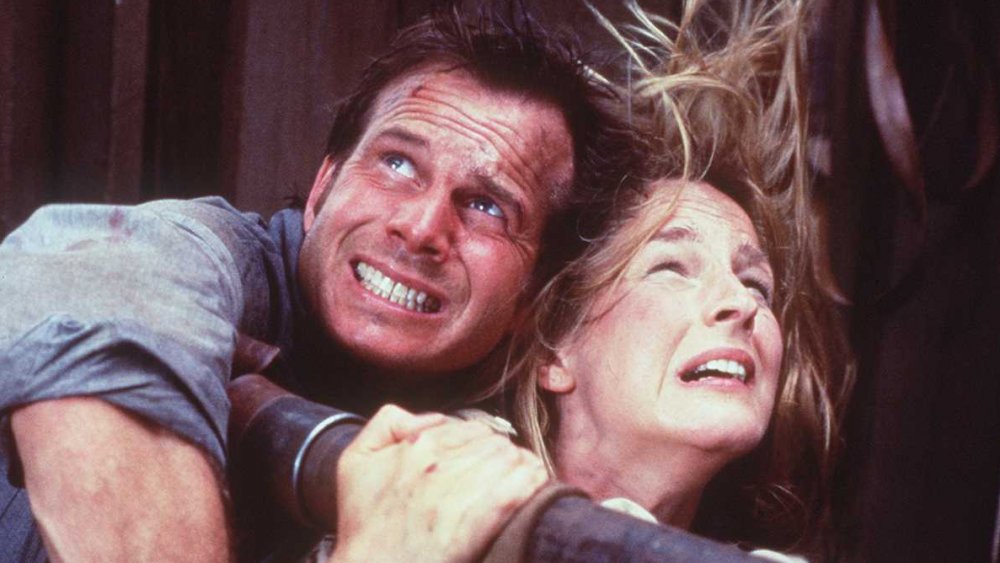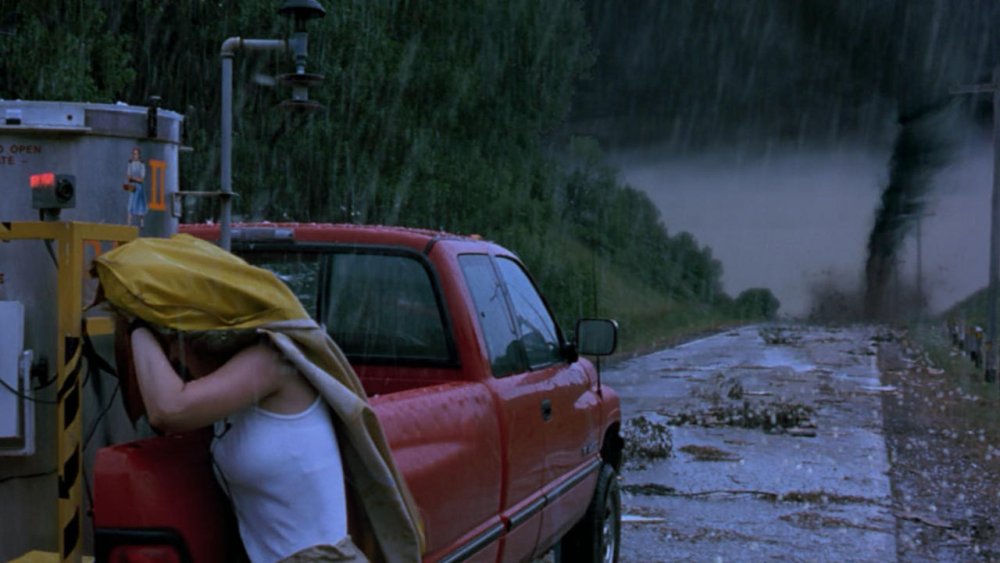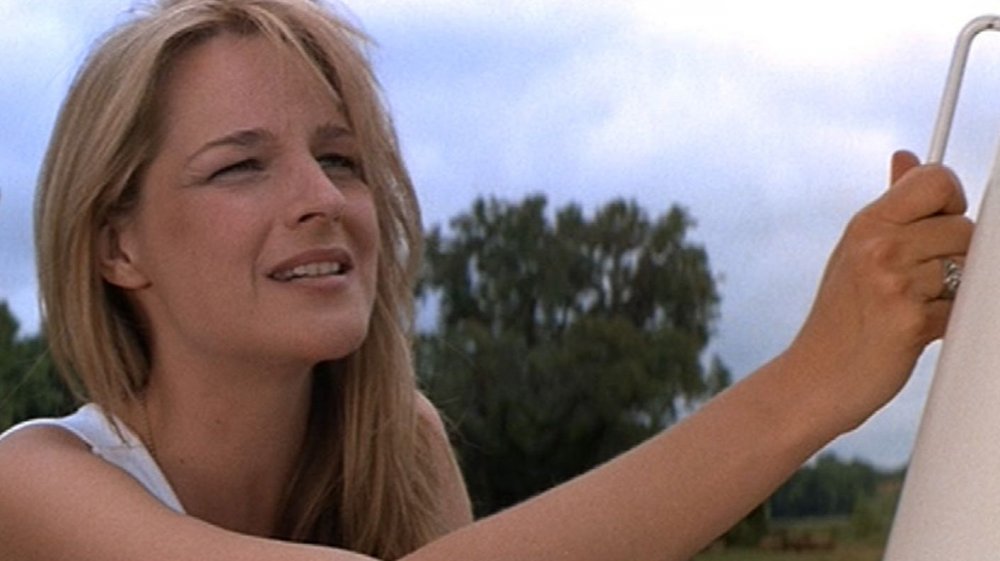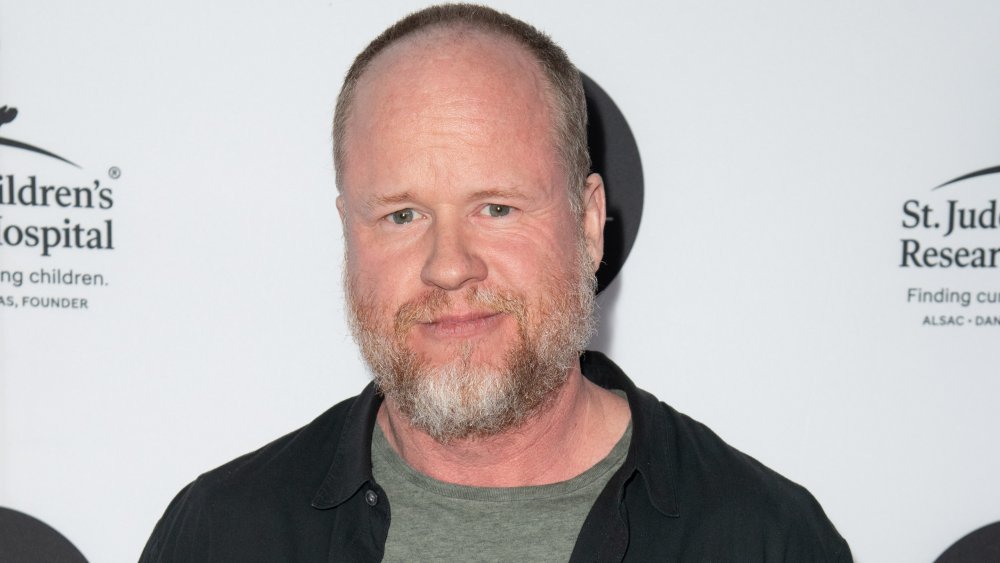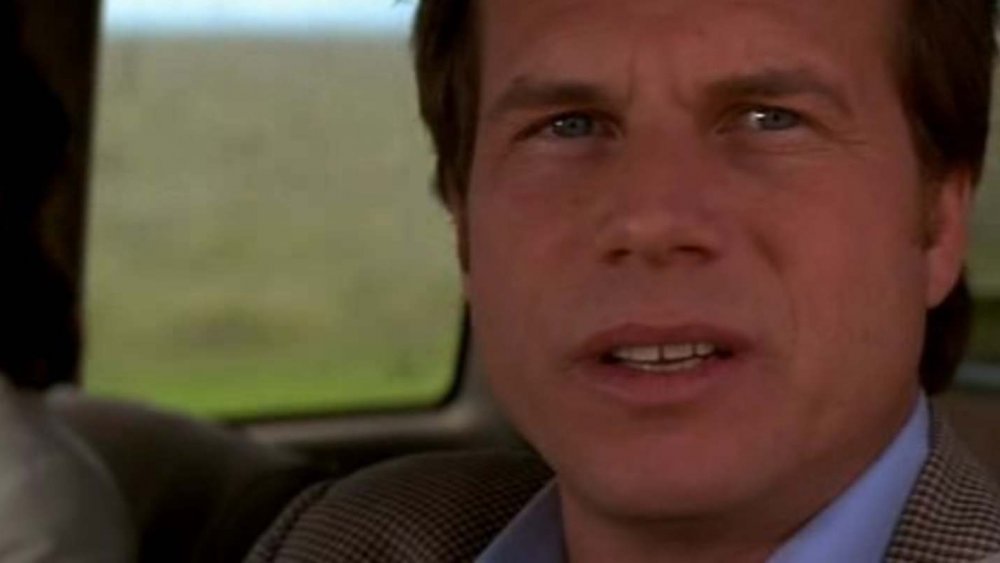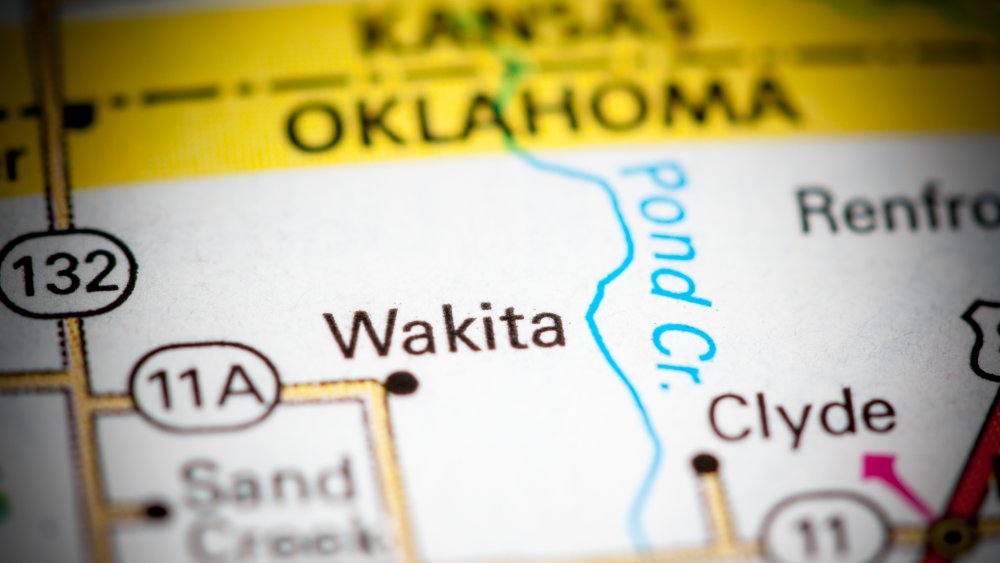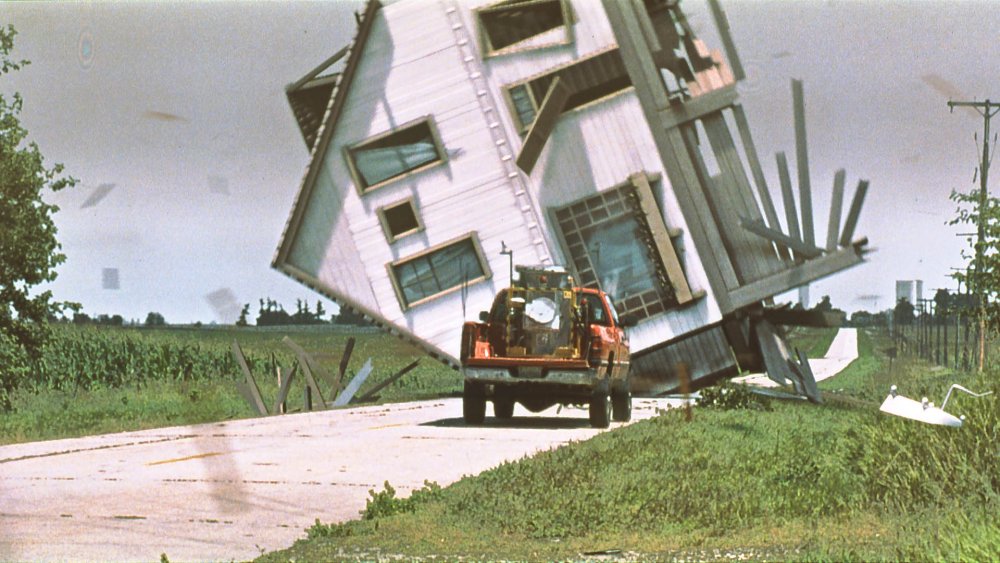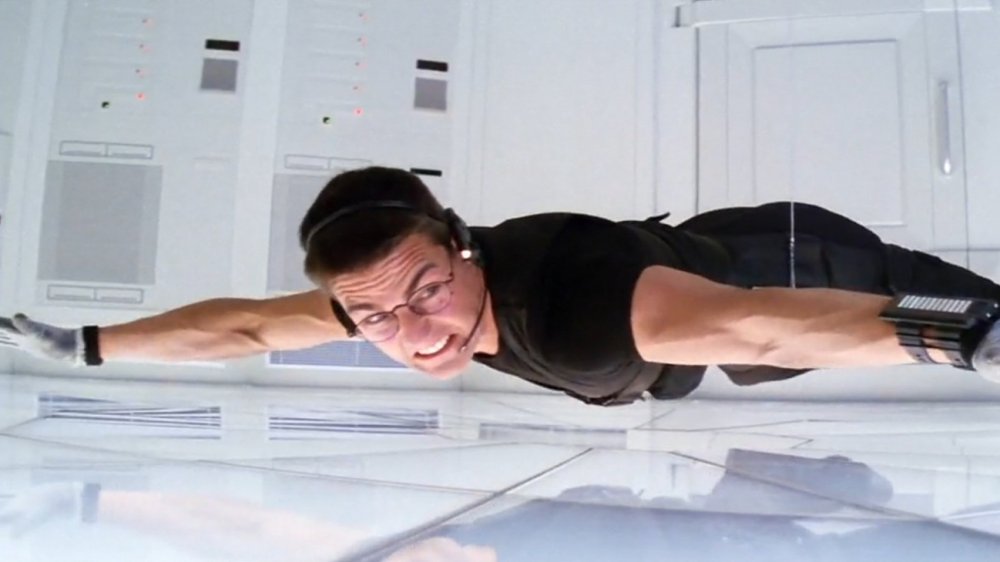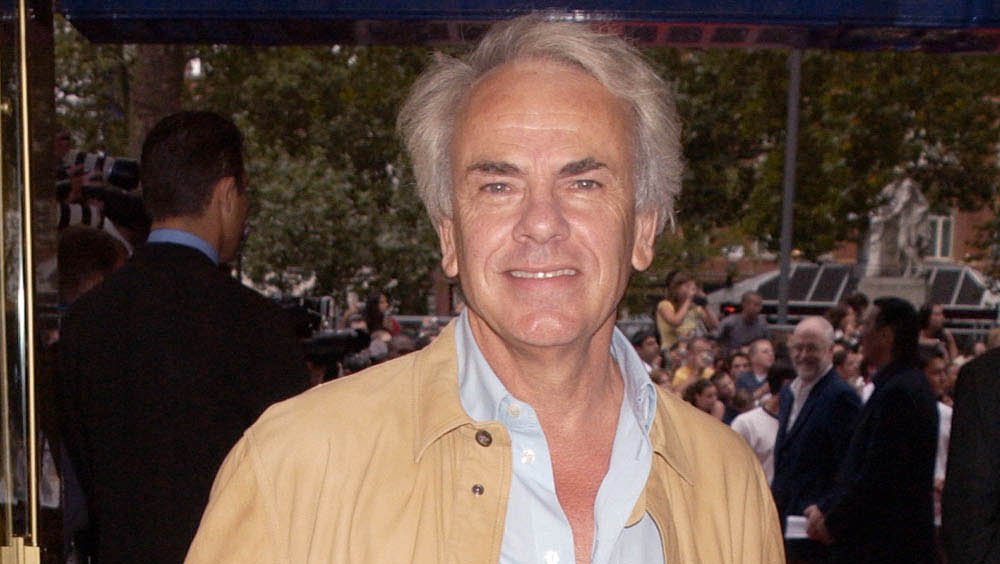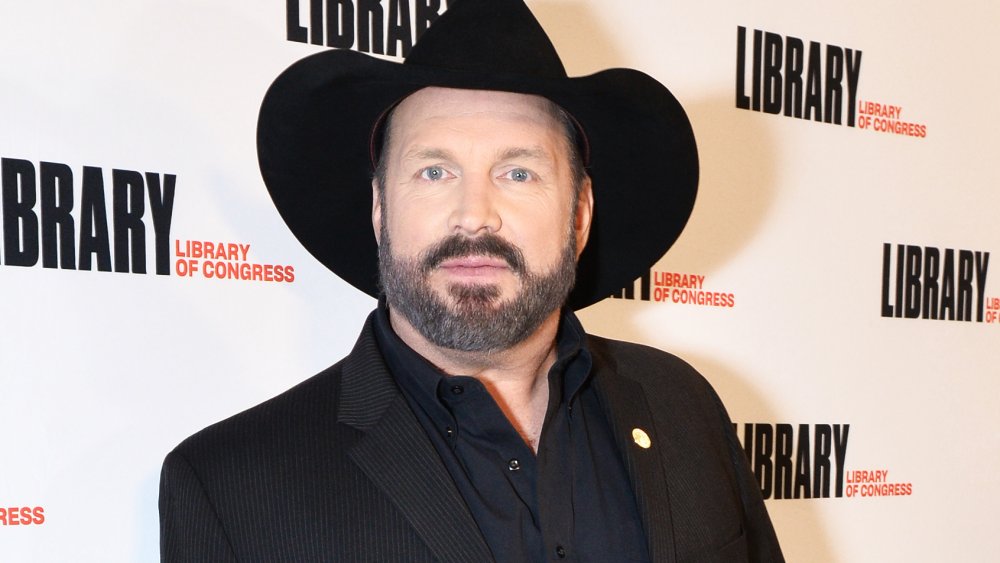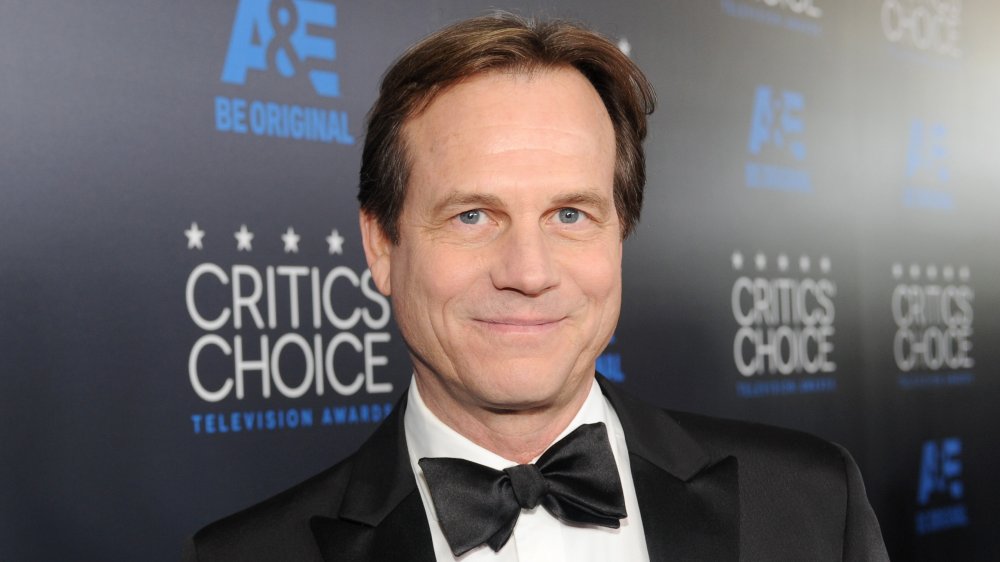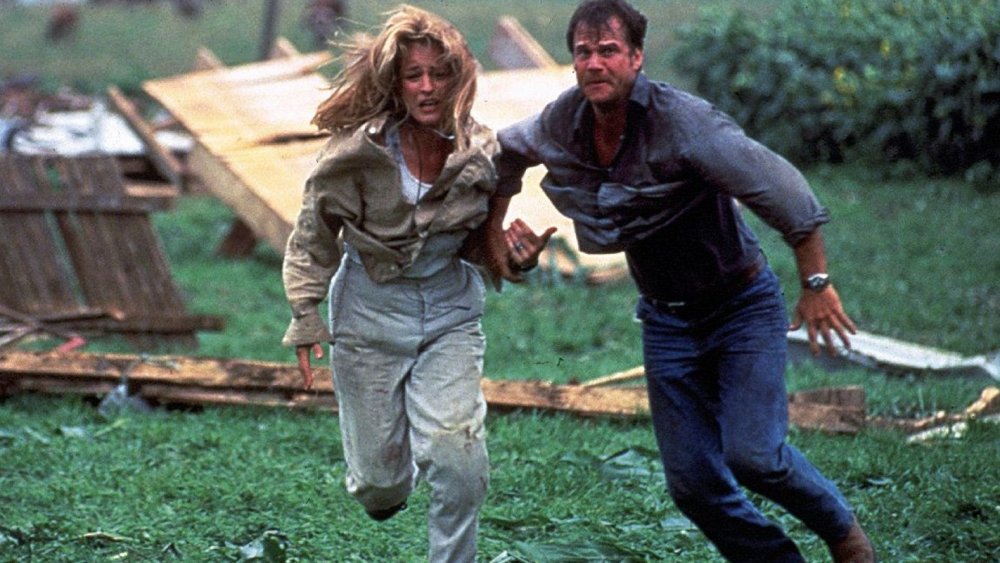The Untold Truth Of Twister
The summer of 1996 gave the world three blockbusters that have transcended the realm of come-and-go action movies and have become the kinds of classics you always rewatch when they pop up on TV or Netflix. Independence Day had aliens, and Mission: Impossible had rogue CIA agents, but Twister scared and thrilled audiences with a threat everyday people actually meet on a regular basis — tornadoes.
For a film centered around that most dull of topics — the weather — Twister had high expectations to live up to. It cost $88 million to make, and it was a rare joint effort between two rival studios, Universal and Warner Bros. And the real stars of the movie — the tornadoes — brought their own challenges. Even a director as forceful as Jan de Bont, who was riding high from his Speed fame, couldn't control the weather on the Oklahoma locations. And the bit he could control — the recreating of tornado conditions — nearly broke his two human stars, Bill Paxton and Helen Hunt.
Twister was a whirlwind success, becoming the second highest-grossing movie of the year (ousted from the top spot by Independence Day). It also became a ride at Universal Studios. However, the untold truth of Twister will leave you glad the storm is only on the screen.
The weather caused real problems during the shooting of Twister
The weather has a starring role in Twister, but it proved to be a real diva on set. The film was shot on location in Oklahoma and also in Iowa, which left it at the mercy of the worst weather that wide open states have to offer. Recalling the experience to The New York Times in 1996, Jan de Bont said that he and the 350-strong crew were contending with floods and non-digitally created tornadoes. As he explained, "It was like nothing that I've encountered in my life. ... We kept getting stuck in mud. The whole thing was like moving a circus around dirt roads."
Even sunshine made things difficult. The filmmakers needed dark, broody skies devoid of real rain. Waking up to blue sunny skies meant changing their whole schedule or not shooting at all that day. This constantly shifting plan caused chaos and tension on set, and the crew's patience wasn't the only casualty. At one point, de Pont had Helen Hunt and Bill Paxton shoot close-ups with bright lights shining in their eyes to make the sky behind them look dark. Paxton told Entertainment Weekly that both of the actors "literally sunburned [their] eyeballs." He then added, "I got back to my room, I couldn't see." Fortunately, the blindness was temporary, but the two leads had to use eye drops and wear special protective glasses for a couple of days.
Twister director Jan de Bont fought to cast Helen Hunt
You don't hear much from Helen Hunt anymore, but in 1995, she was a popular TV star thanks to her lead role in the NBC sitcom Mad About You. Hunt played half of a married couple (opposite Paul Reiser) living in New York, but while her TV role gave her name recognition with potential audiences, it nearly prevented her landing the lead in Twister.
Warner Bros. and Universal Studios, which produced the movie together, were hesitant about giving Hunt a major role. They worried that she wouldn't have time to finish the movie before shooting started on Mad About You. In hindsight, even Hunt admitted that Jan de Bont's insistence on hiring her was "ridiculous." She told Entertainment Weekly, "Everyone was telling him, 'You can't put an $80 million movie on the line because Helen has to go back to her TV show in August.' ... Jan was like, 'I'm doing it.'"
It was Hunt's primarily small screen status that made her right for the part, according to de Bont. "Big stars get in the way of the movie," he told The Morning Call. Also, Hunt had a certain stormy quality. "I wanted Helen because she reminds me of a whirlwind. She can boss people around. She has a strong persona, which I like," de Bont explained. He prevailed, and Mad About You ended up being delayed by two and a half weeks so Hunt could finish Twister.
Joss Whedon fixed up the script
Joss Whedon is a household name thanks to TV shows like Buffy the Vampire Slayer and Angel and movies like The Avengers and Avengers: Age of Ultron. However, some of the movies Whedon has worked on don't bear his name. For example, he wrote most of the dialogue for 1994's Speed, according to the script's credited writer Graham Yost, but he didn't receive an official credit. He's also primarily responsible for the final version of Twister.
The first Twister script was written by husband and wife duo Michael Crichton (of Jurassic Park) and Anne-Marie Martin, who are credited for the screenplay and earned a reported $2.5 million. But de Pont implied to Entertainment Weekly that the couple's script left much to be desired, and that Whedon was called in to rework it. When Whedon was laid out by bronchitis, Schindler's List screenwriter Steven Zaillian was called in to substitute until he recovered.
Whedon was still working on rewrites when shooting started, and he kept going up until his wedding day, after which he went on a much-needed honeymoon. With Whedon gone, de Bont kept another writer, Jeff Nathanson, on set for the rest of the shoot in case more last minute changes were needed.
Bill Paxton landed the role because his hair grew quickly
When Jan de Bont was casting Twister in 1995, Bill Paxton had already had memorable roles in blockbusters including The Terminator, Aliens, True Lies and Predator 2. That year he played one of the three astronauts in Apollo 13, a role that earned him a shared SAG Award for Outstanding Performance by a Cast. But when it came time to audition for de Bont, the director was less interested in testing Paxton's well-documented acting skills than he was in his answers to two other questions.
In 1996, Paxton told Oprah Winfrey that the director's main concern was Paxton's capacity for danger. As Paxton explained, de Bont asked him, "'How close can I put you to one of these tornadoes?' That's all he wanted to talk about. ... I'm thinking, 'Oh boy. We'll all be killed.'"
He had less control over de Bont's other condition — longer hair. At the time, Paxton was so fresh off Apollo 13 that he still had the astronaut crew cut. As Paxton told The Morning Call, "When I met Jan, he stared at me intently and said, 'Bill, how fast does your hair grow?' My being cast in the movie seemed to turn on my answer."
Paxton delivered on the hair front and in his enthusiasm for risky set environments. "It wasn't something you wanted to continue doing, but we weren't in any real danger," he told Entertainment Weekly. "Fortunately, I'm oven-tempered for flexible strength."
There's a Twister museum in this tiny Oklahoma town
Even Hollywood magic can't recreate the sweeping cornfields and huge skies of Oklahoma, so Twister was mostly shot on location across the state (and also in Iowa). The town that hosted the brunt of the destruction was Wakita, OK. Home to about 500 people when filming took place in 1995, Wakita didn't even have a movie theater.
According to The Oklahoman, residents' main concern was that the film might contain sex scenes. They also wanted the town's name to be used. One man even requested that the filmmakers use a shot of the water tower with "Wakita" painted on the side. Thanks to that name recognition, there's now a free Twister museum in operation in the town. Run by volunteers, it features props including Dorothy I and bricks from the demolished buildings.
Although the tornadoes were created through special effects, the destruction was real. Warner Bros. bought eight blocks of houses, built facades in front of vacant lots, and renovated the house that became Aunt Meg's (Lois Smith). After all that work, they destroyed them for the scenes showing the damage sustained when the F4 hits Wakita.
Most residents were excited to see their hometown on the big screen — and unlike tornadoes, the crew didn't unleash a wave of destruction and then bail out. Locals interviewed by The Oklahoman noted that the crew did an excellent job of clearing up the rubble and even planted new trees.
No acting was required when the weather machines were on
The actors didn't have to try too hard to imagine what it would be like to be caught in a tornado. The wind, rain, hail and even some of the falling debris were real.
Bill Paxton was no stranger to physically demanding movie roles by 1995. He'd just starred in Apollo 13, which involved flying in NASA's zero-G-creating KC-135 weightless trainer, aka the "Vomit Comet." But he admitted that getting pelted with ice by Twister's hail machines might've been worse. "I mean, what would you rather do, throw up or be hit in the head real hard with a piece of ice?" he asked The Morning Call (rhetorically, it seems).
Even the ice-free weather sequences were tough. The wind was created by seven wind machines and two jet engines, which blasted up to 200 mph. And when they added rain, even director Jan de Bont admitted to The Morning Call, "They didn't have to act anymore."
He was less sympathetic when it came to the debris, some of which was real. Paxton and Helen Hunt were in the car when life-size farm machinery made from lightweight aluminum and a two-story house were dropped into their path. Talking to Oprah Winfrey, Paxton pointed out that a harvester really did smash the windscreen of the car, only for de Bont to add, "It wasn't that dangerous. ... They get scared very quickly."
Post-production on Twister was rushed to beat Mission: Impossible
After the chaotic shoot finally wrapped, director Jan de Bont moved on to post-production and special effects, which turned out to be even more frantic than filming (though thankfully devoid of flying debris).
A big problem facing de Bont was the blue skies that had cameoed in the many scenes that were supposed to depict an imminent or raging tornado. The original agreement with visual effects company Industrial Light & Magic (ILM) was for digital sky replacement on 150 shots. But de Bont persuaded them to more than double it.
This increased workload put everyone under a time crunch to meet the April 29 delivery date set by Warner Bros. Visual effects producer Kim Bromley Carson described it to Entertainment Weekly as "as close to drop-dead as it gets." And then Warner Bros. ratcheted the intensity up to F5 by moving the release date back by a week, from May 17 to May 10. Their plan was to beat rival summer action movie Mission: Impossible, due for release May 22, by two weekends.
De Bont and his team labored round the clock to get the movie finished, and their work paid off at the box office. Twister made $495,700,000 worldwide to Mission: Impossible's $457,697,994. (Both were annihilated by Independence Day, which grossed over $817,000,000.) However, the Tom Cruise spy thriller won the war. The Mission: Impossible franchise has made over $3.5 billion whereas a Twister sequel never got off the ground.
Jan de Bont's stormy directorial style led to a crew mutiny
Director Jan de Bont's over-the-top demands made an already action-packed shoot even harder. Bill Paxton described him as "intense" to Entertainment Weekly, but some of the crew had stronger feelings.
A few weeks into shooting in the summer of 1995, de Bont fell out with cinematographer Don Burgess, who'd been director of photography on Forrest Gump, the previous year's big hit. Along with Burgess went 20 members of the crew. One of them told Entertainment Weekly that de Bont was disorganized, switching between which direction he wanted to shoot and getting angry when the new set-ups took too long. He also allegedly knocked over a cameraman who missed a cue.
For his part, de Bont blamed the ever-changing weather for last-minute alterations to the shooting schedule. He also said that he was under pressure from studio executives who felt the shoot was running behind, which he blamed on Burgess' inability to adapt to the weather. Burgess and his team stayed on for a week and then handed over to replacement Jack N. Green, who was best known for his work on several Clint Eastwood films, including Unforgiven and The Bridges of Madison County.
Green got on better, but he understood Burgess' point of view. He admitted to Entertainment Weekly that he'd worked with easier and tougher directors, putting it down to de Bont's intense focus on his work, clarifying, "He's socially an extremely congenial person."
Garth Brooks turned down a role in Twister
Country singer and Oklahoma native Garth Brooks declined a role in what turned out to be the biggest movie that had ever been filmed primarily in his home state. While we normally hear about actors unwisely declining hit roles in interviews many years after the fact, details about Brooks' poor decision-making came out in a lawsuit.
In 2013, details came to light about a lawsuit filed by Brooks' former production partner Lisa Sanderson, who alleged that she lost money and opportunities thanks to Brooks' refusal to take certain high-profile movie roles. Specifically, he turned down a part in Saving Private Ryan, which won five Oscars and was the second highest-grossing movie of 1998 (behind Armageddon). It wasn't that Brooks didn't like the script. Sanderson claimed that he didn't want to be outshone by superstars Tom Hanks and Matt Damon. He'd had a similar issue with Twister a few years earlier. According to the lawsuit, Brooks refused a role in the movie because he thought he'd be eclipsed by the tornado.
Bill Paxton had the same realization — and a different conclusion — when he was offered the lead in Twister. "Me and Helen, they weren't gonna talk about us much. ... 'The acting, ah it's okay, but the tornadoes are great, the flying cow's really cool,'" he told an interviewer in 1997. Instead, he used the name recognition to get his passion project, Traveller, made. You do what you gotta do.
Storm chasers paid a unique tribute to Bill Paxton
Before Twister, storm chasers were seen as weather nerds looking for an adrenaline fix. The movie didn't get everything right, but meteorologists and storm chasers were happy to see themselves at the center of a high-grossing action movie that made them look like the Indiana Joneses of weather.
Speaking about the movie in 1995, a year before it came out, Bill Paxton told an interviewer, "I think this is going to be to tornadoes what Jaws was to sharks." He said that a meteorologist at the National Severe Storm Lab (NSSL) who advised the filmmakers had written to Paxton praising Twister. "As a meteorologist, a big part of his work is mathematics and science," Paxton said. "And this will appeal to young people to go into the sciences."
Many future storm chasers got their first glimpse of the profession while watching Twister. And when Paxton died of complications from surgery on February 25, 2017, they expressed their gratitude with a unique tribute. People across the area of the US known as "Tornado Alley" coordinated with each other to write the initials "BP" onto maps using their GPS systems. Some efforts put the small town of Wakita, OK, where some of Twister was filmed, at the center. Spotter Network, who helped organize the effort, acknowledged Paxton's contributions to the profession, writing on Facebook, "The visibility of storm chasing to the public certainly impacted the avocation many of us enjoy. Our thoughts are with his friends and family."
Helen Hunt battled through multiple on-set injuries during Twister
Helen Hunt saw Twister as an antidote to her work on the sitcom Mad About You. She explained to The Morning Call, "This movie invited me to be physical and instinctive and messy." A bit too physical, sometimes. As she told Yahoo News, "It was terrifying every day."
Hunt and Bill Paxton both damaged their eyes, thanks to bright set lights. They both spent several hours in a bacteria-infested irrigation ditch — "It became finally known as the irritation ditch," Paxton joked to Oprah Winfrey — which led to hepatitis shots. Even more serious, Hunt repeatedly knocked her head. She forgot to duck a few times when going under a wooden bridge, and when she and Paxton opened their car doors while driving through a cornfield, Hunt's door slammed back into her head. Hunt described it as "brutal" to Entertainment Weekly. Paxton sympathized, saying, "It scared the hell out of her, and I don't blame her for being upset." Hunt reshot the scene, this time with a railing to hold the door open.
Director Jan de Bont was characteristically unsympathetic. He was encouraging to Hunt's face, reportedly telling her at the end of the shoot, "You were very strong." But in an interview with Entertainment Weekly, he said of the incident with the car door, "It wasn't very hard," and he blamed her for the bridge accident, saying, "I love Helen to death, but ... she can be also a little bit clumsy." And you thought the tornado was vicious.
